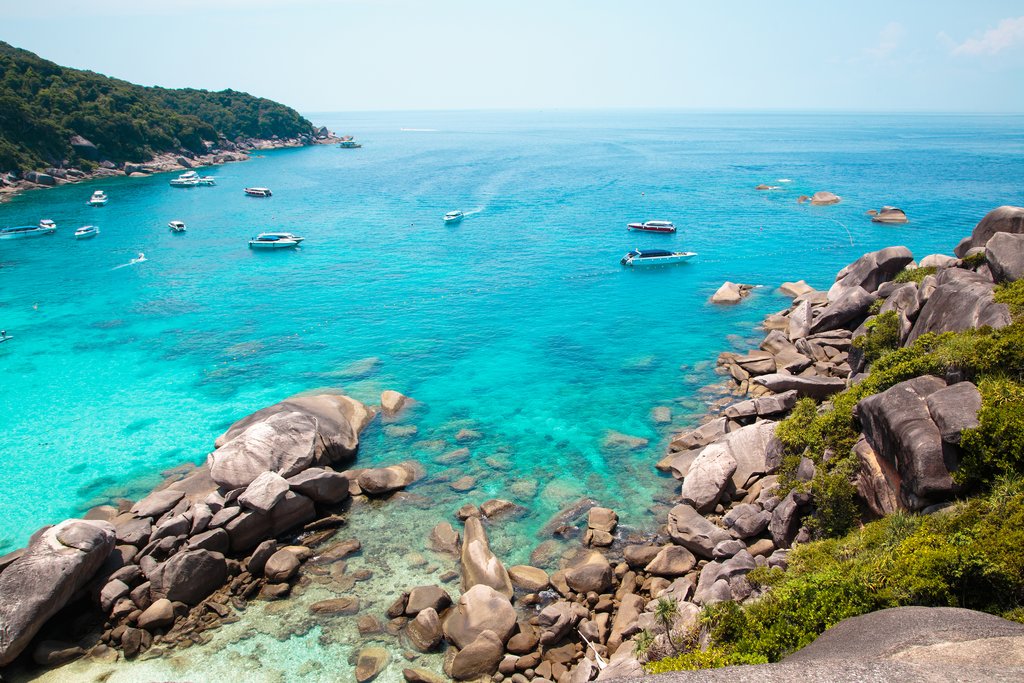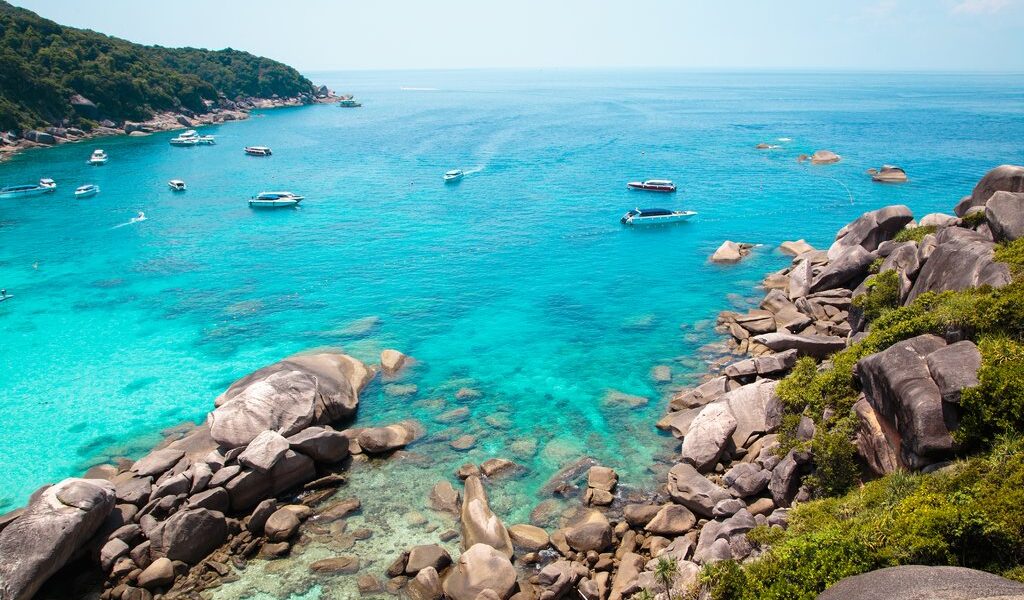
March is a fabulous month to visit Thailand. The weather is still pleasant, especially in the first half of the month, although the southern beaches will start getting some rain along the Andaman Sea. It’s also the beginning of mango season, and throughout the country, the colorful fruit is piled high at roadside stands and on people’s plates mixed with sticky rice. Best of all, the hot season hasn’t arrived yet (which is often uncomfortably warm) so you can walk around outside without being miserable.
Thailand in March: A Comprehensive Guide
## Weather in Thailand During March
March in Thailand presents a diverse range of weather conditions depending on the specific region you plan to visit. In the central plains and northern regions, the month is characterized by moderately hot temperatures, generally fluctuating between a minimum of 77 degrees Fahrenheit and a maximum of 95 degrees Fahrenheit. This can make for some warm days, especially when engaging in outdoor activities. However, the elevated temperatures are often accompanied by clear, sunny skies, perfect for exploring the cultural and historical sites that these regions offer.
Venturing into the mountainous areas surrounding Chiang Mai and Chiang Rai, travelers can anticipate a welcome respite from the daytime heat as evening temperatures descend to around 66 degrees Fahrenheit. This cooling effect is often perceived as a refreshing contrast to the warmer, more humid conditions experienced during the day. The evenings are ideally suited for enjoying the local cuisine at outdoor restaurants or taking leisurely strolls through the vibrant night markets.
Rainfall is minimal throughout most of Thailand in March. With the exception of the southern peninsula, the vast majority of the country experiences an average of just two rainy days during the entire month. This dry climate makes March an excellent time for sightseeing, outdoor adventures, and exploring the diverse landscapes of Thailand.
The southern part of Thailand experiences slightly wetter conditions than the rest of the country, although it is by no means considered a rainy period. The monsoon season has yet to arrive, and the eastern coast along the Gulf of Thailand remains largely dry. On the western side of the peninsula, popular destinations like Phuket and its neighboring beaches typically experience around six rainy days in March. However, the precipitation is generally mild, with air temperatures remaining comfortably between 75 and 91 degrees Fahrenheit. The combination of warm temperatures and occasional light rain provides an ideal environment for beachgoers and water sports enthusiasts.
## Crowds and Costs in Thailand in March
While the bustling cities of Bangkok and Chiang Mai are known for their perennial crowds, March marks a period when the peak of the high tourist season begins to subside. Although popular tourist attractions may still have queues, and it’s generally advisable to book tours and accommodations in advance, the congestion is not as severe as it is during the earlier months of the year. This reduction in crowds allows for a more relaxed and immersive experience, enabling visitors to explore the cities at their own pace.
The beaches of Thailand, in particular, begin to experience a noticeable decrease in the number of visitors during March. This makes it an opportune time to relish the coastal scenery, with slightly fewer people vying for space on the pristine sands. The reduced crowds create a more tranquil and intimate atmosphere, perfect for those seeking relaxation and rejuvenation.
In terms of accommodation costs, some hotels may still be charging high-season rates, while others begin to offer discounted deals. Overall, prices during March are mixed, and the amount you ultimately pay will largely depend on your chosen destination and activities. It is always recommended to plan ahead and make reservations in advance, especially for tours, transportation, and other experiences that are likely to book up quickly.
## Where to Go in Thailand in March
March is a particularly pleasant time to visit Bangkok. Although the city remains lively, the crowds begin to thin out slightly, and the oppressive heat has yet to fully set in. This makes it an ideal period for exploring the city’s numerous temples, wandering through its vibrant streets, and discovering the diverse array of trendy bars and restaurants.
The beaches in southern Thailand are also incredibly appealing in March. The limited rainfall, especially during the first half of the month, ensures plenty of sunshine and clear skies. Visitors can expect to find beautiful blue waters, warm temperatures, and pristine white beaches, all with fewer tourists than during the peak season. Resorts in areas like Ko Samui tend to have the best weather, while Phuket and other towns on the western coast can also be quite pleasant.
Northern Thailand presents a more complex picture during this time of year. While the weather remains dry, daytime temperatures begin to soar. Highs in Chiang Mai often reach around 95 degrees Fahrenheit, with similar temperatures in the vicinity of Pai and Mae Hong Son. As you venture further north, the heat can become even more intense, potentially making Chiang Rai somewhat uncomfortable at times.
Furthermore, the “smoke season” commences in northern Thailand during March. This is a period when farmers burn the sugar cane fields in preparation for harvesting, resulting in extremely hazy atmospheric conditions. Pollution levels are typically high during this time, and wearing a mask is often recommended. However, the smoky conditions can also deter some tourists, leading to smaller crowds. If you are prepared to tolerate the haze, the reduced number of visitors can be an advantage.
## What to Do in Thailand in March
Bangkok offers a vibrant and cosmopolitan experience, boasting world-class dining options. Explore the trendy restaurants in Thonglor and Sathorn, or sample the renowned street food in Chinatown. Consider taking a sunset cruise along the Chao Phraya River or a leisurely bike tour along the waterfront. During the day, explore iconic tourist sites such as the Grand Palace in the Rattanakosin royal district, or the famous Wat Pho (Temple of the Reclining Buddha).
At the southern beaches along the Kra Isthmus, immerse yourself in the turquoise waters or relax on the pristine white sand beaches. Treat yourself to a luxurious massage or an invigorating herbal spa treatment. Around Phuket, explore Phang Nga Bay or Phi Phi Island, renowned for their stunning natural beauty.
In northern Thailand, Chiang Mai is home to a famous Night Bazaar, where you can purchase unique hand-crafted souvenirs and indulge in a bowl of Khao Soi at one of the many food carts. Nimmanhaemin Road offers a plethora of trendy restaurants and shopping opportunities, while the Doi Suthep temple, located just outside the city, provides a scenic escape with breathtaking views. About three hours northeast of Chiang Mai, the Elephant Valley Thailand sanctuary near Chiang Rai offers a unique opportunity to observe rescued elephants as they roam freely, swim, and bathe. In some instances, visitors may even have the chance to feed them bananas or stalks of bamboo.
## Events in March
**Kite-Flying Festivals:** March marks the official start of kite-flying season in Thailand. The strong winds during this time of year create ideal conditions for kite-flying, and festivals are held throughout the country, including in Bangkok, Chiang Mai, and other towns.
**Bun Pha Wet Festival:** In the northeastern province of Roi Et, locals celebrate a three-day festival in March known as Bun Pha Wet. This festival commemorates the return of Vetsandon, the previous incarnation of Buddha. The festivities include a grand parade with rice offerings, traditional dancing, cultural performances, and an abundance of Khao Poon soup.
**Turtle-Releasing Festival:** Every March, residents of Phang Nga gather at Thai Muang Beach to participate in the release of turtle hatchlings back into the sea. The young turtles, raised by the Fisheries Department, are part of a conservation program aimed at protecting these endangered creatures. In addition to the turtle release, there is a parade and various activities designed to raise awareness about the plight of the endangered turtles.
## Traveling to Thailand in March?
Consider the Thailand Authentic Grand Tour – 12 Days. This comprehensive tour combines popular tourist destinations with hidden gems. Highlights include a midnight food tour by tuk-tuk through Bangkok, a visit to a floating market in Kanchanaburi, and a kayaking adventure through Phang Nga Bay.
B-2596

